Drinking tea wisely can help you dissolve blood clots in one month
Drinking tea wisely can help you dissolve blood clots in one month 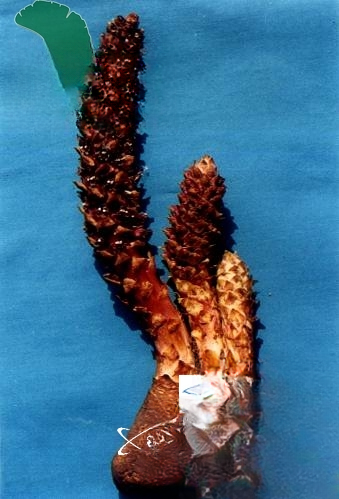
On October 15, 2011, CCTV-10's "Discovery" broadcast a unique program. The crew, led by a guide, walked into the depths of the Greater Khingan Range and witnessed the legendary immortal grass in the sparsely populated primeval forest. The magical functions of the immortal grass were also verified one by one under the guidance of the Oroqen elders. After the program was broadcast, the legends of the immortal grass spread all over the country in an instant.
Effective on the same day, dissolves blood clots in the body within a month
. On the day of drinking, the original dizziness, palpitations, brain swelling, headaches, unsteady standing, and numbness of hands and feet are gone! The whole body is full of energy, the mind is clear, the appetite is good, the bowel movements are smooth, and the sleep at night is especially sweet! The blood clots in the body can be dissolved within a month, and the symptoms such as headaches, palpitations, and chest tightness will disappear. You no longer have to worry about sudden symptoms such as cerebral hemorrhage, stroke, and hemiplegia caused by a sudden drop in temperature! After drinking for 2 months, the three highs, heart disease, and cerebral thrombosis are all gone!
After drinking it for two months, my blood pressure dropped to below 130/80, my fasting blood sugar was 6.0, and my hypertension, diabetes, arteriosclerosis, cerebral thrombosis and other symptoms improved. I can gradually reduce the intake of blood pressure and blood sugar lowering western medicine. It can not only lower fat and dissolve blood clots to save the heart and brain, but also get rid of western medicine! After drinking it for 3 months, my belly was flat, and my cardiovascular and cerebrovascular diseases were cured!
Drink "Immortal Herb Tea" for 3 months, and you will be pleasantly surprised to find that men's big bellies have shrunk, and women look a dozen years younger. All the "time bomb"-like blood clots in the cardiovascular and cerebrovascular systems have dissolved. Avoid the recurrence of cardiovascular and cerebrovascular diseases, keep the heart, brain, and kidneys young, and extend life by 30 years.
Professor Peng reveals the secret of "Immortal Herbal Tea Therapy"
Professor Peng, a famous expert at the Chinese Academy of Traditional Chinese Medicine who has been studying geriatric diseases for a long time, found that "In fact, there were records of immortal grass in medical books as early as the Song Dynasty, but because the yield was too small, few Chinese medicine practitioners had seen or used this medicine. It is a good thing to strengthen the gate of life, nourish the kidneys, and raise yang energy. Over the years, I have followed more than a thousand cases and recorded the therapeutic effects of immortal grass in detail. I found that it is ideal for the prevention and treatment of many chronic diseases of the elderly, especially for the elderly with weak qi and insufficient gate of life. The effect can almost be said to be immediate!"
The immortal grass, which is produced in Jiagedaqi, the capital of the Greater Khingan Range, is scientifically called Cistanche deserticola. It is known as "longevity tea" and "magic tea" in the local area. It can lower blood pressure and lipids, regulate pancreatic islets, detoxify and protect the liver. It is a natural "cleanser" for the human body. Ordinary tea cannot be drunk overnight, but immortal grass can still be drunk after being soaked for a week. It not only does not detoxify drugs, but can also assist Chinese and Western medicines to achieve better results.
Professor Peng said, "The human body is like a car. It originally had a load of 100 kilograms. But because modern people have better living conditions, they eat and drink a lot and don't exercise, so they often carry 150 or 200 kilograms of "serious overload". The digestive and metabolic organs can't bear it, which will cause a bulging belly, and cardiovascular and cerebrovascular diseases, diabetes, gout, fatty liver, constipation, tumors, etc. will all come together..."
9 chronic diseases, drinking tea has a miraculous effect
1. Rapidly lower blood pressure and stop taking the medicine in 30 days:
Drinking the herbal tea can help blood vessels become unobstructed, increase elasticity, activate heart and brain cells, and restore nerve function. Within 30 days, blood lipids and blood pressure dropped and stabilized, and western medicine was stopped.
2. Dissolve blood clots and help patients with hemiplegia after stroke stand up:
Drinking the immortal grass tea for 6 days can dissolve blood clots and clear your mind. After taking it for 20 days, the hemiplegic limbs will feel obvious pain, numbness and itching. After drinking it for 1-2 months, the brain nerve function will be restored, the hemiplegic limbs will be flexible, the language will be clear, and the patient can basically take care of himself.
3. Lose your belly and live longer:
Gastrointestinal discomfort, bloating, burping, excessive farting and other problems will be cured on the same day. Your belly will be smaller in 30 days, and you will have a healthy body in 60 days.
4. Lower blood sugar and cure diabetic complications:
The effect of chrysanthemum tea is ten or a hundred times better than propolis. A large number of facts have proved that drinking chrysanthemum tea can easily lower blood sugar and prevent diabetes, kidney disease, eye disease, heart disease, brain disease, and skin disease. Even many diabetics who have already developed gangrene, kidney failure, retinopathy, and heart disease have improved comprehensively and reduced or even stopped taking hypoglycemic drugs.
5. The heart becomes younger and stays away from sudden death from myocardial infarction:
Drinking chrysanthemum tea for a month can reduce excess pericardial fat, keep the heart's blood supply unimpeded, and keep patients with coronary heart disease away from angina pectoris. Long-term use can also form a natural protective barrier for the heart and prevent myocardial infarction.
6. It can reduce fat and nourish the kidney, and improve the sexual pleasure of couples:
Drinking immortal grass tea can also purify the capillaries in the kidneys and genitals. After drinking it for one week, the kidneys and genitals are well nourished, urination is smooth, and the couple's life is more harmonious.
7. Gout is cured, and delicious food can be eaten in a variety of ways:
Gout is caused by purine metabolism disorder in the human body. Drinking angelica tea for 2 weeks can correct the purine metabolism disorder. Then you can drink wine and eat meat in big bowls and enjoy the delicious food!
8. Calm the mind and promote sleep:
Patients who drink the herbal tea can fundamentally solve various insomnia problems. The effect is obvious in 3 days. They fall asleep quickly and sleep soundly without any side effects. Long-term persistence can resist aging and keep you young.
9. Aging, longevity:
Drinking angelica tea regularly can maintain adequate blood supply to organs throughout the body, resist and reverse the aging of organs such as the heart, brain, liver, and kidneys, greatly reduce the incidence of diseases, and extend life expectancy by 10-20 years!
Just one spoonful a day can clear blood clots in a month!
A person living in London had a personal experience. When he went to Pakistan for a meeting, he suddenly felt severe chest pain. Later, the hospital found out that his three cardiovascular vessels were severely blocked and he needed a bypass surgery.
The surgery was scheduled for a month later, during which time he went to see an ancient healer in a Muslim country.
The Hakim asked him to follow a diet therapy at home, which he followed for a month. One month later, he went to the same hospital for a checkup and found that his three blood vessels were clean and the blocked areas were now all clear. He is a devout Muslim, and in order to benefit more people, he shared his experience online, and also posted two photos of his blood vessels before and after the diet therapy. In the photos, even ordinary people can see the difference between before and after taking the diet therapy.
Material:
1.5 lemons 2 large pieces of ginger
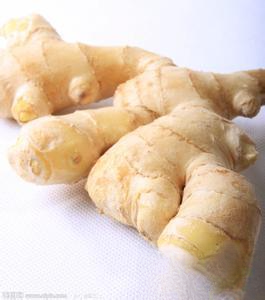
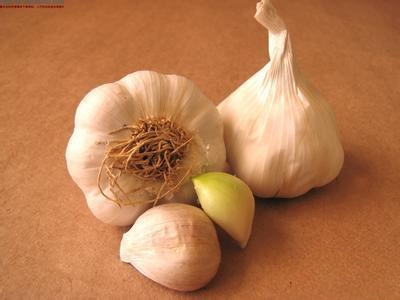
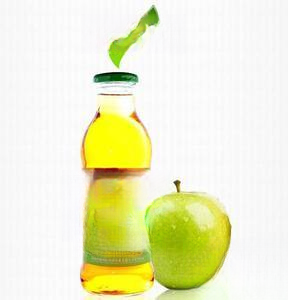
Three heads of garlic A small bottle of apple cider vinegar
practice:
1. Peel the garlic and ginger, cut them into small slices, put them into a juicer together to squeeze out the juice, or put them into a blender to make a paste, use a mesh to separate the residue, and squeeze out the juice by hand.
2. Put garlic and ginger juice into a clay pot, add lemon juice and apple cider vinegar, boil over high heat, then simmer over low heat. Do not cover the pot to allow the water to evaporate. It will take about half an hour, and about half of the juice will remain.
3. After the temperature drops, add honey and stir carefully. A lot of honey is needed, mainly to make the juice easier to swallow.
Store the finished product in a glass bottle with a lid and put it in the refrigerator. Take one tablespoon on an empty stomach before breakfast every day.
After taking it for a month and going to the hospital for a check-up, you will find that your blood vessels are clean and all blocked areas are now unblocked.
Must save! Must transfer!
A top-secret formula to open up blood vessels, try it on your loved one!
Encyclopedia Business Card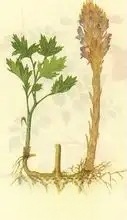
Orobanchecaerulescens Steph. is a plant of the genus Orobanche in the family Orobanche. The whole plant is used as medicine. It is harvested in early summer, dried to 80%, tied into small bundles, and then dried again. It is an annual parasitic herb, 15 to 40 cm tall, and the whole plant is covered with white hairs. The rhizome is thick. The stem is erect, thick, and dark yellow-brown. The spike inflorescence is terminal, accounting for about 1/3 to 1/2 of the stem.
Introduction
1. Bletilla
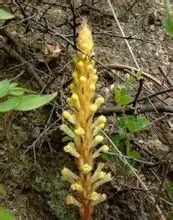
2. Single-root grass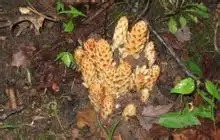
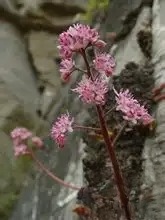
Plant morphology
Pharmacological Action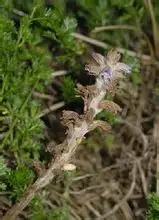
effect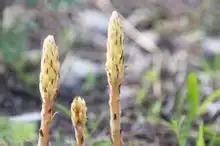
Selection
① The treatment of yang is not popular
②Treat kidney cold and low back pain
Sunflower row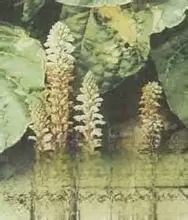
Identification
Identification of raw medicinal materials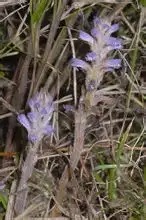
Chemical Identification of Traditional Chinese Medicine
Clinical Application
Distribution area
other
Cistanche deserticola
morphological characteristics:
Perennial parasitic herb, rhizome tubercle swelling, the whole plant is nearly hairless. Stem erect, sturdy, cylindrical, fleshy, purple-brown, 15-50 cm high, 1-2 cm thick, leaves scale-like, usually densely distributed at the base of the stem, triangular or ovate-triangular. Spike inflorescence 5-16 cm long, 2-3 cm in diameter; flowers numerous, dark purple; bracts ovate, sharp; calyx cup-shaped, with irregular 3-5 teeth; corolla lip-shaped, the base of the flower tube swells into a capsule, the upper lip erect, slender, helmet-shaped, nearly entire or slightly 2-lobed, the lower lip is very short, obvious 3-lobed; two strong stamens, extending out of the corolla; 2 carpels, flower heads are obvious, the main head is 2 shallowly lobed. Capsule nearly spherical, two-valved; seeds are small and numerous. Distribution
and habits:
The distribution of clover is relatively narrow, mainly distributed in the Yuequ forest belt at an altitude of 1700-1900 meters in Changbai Mountain, Jilin, Huma County, Heilongjiang, Ergun Left Banner and Ergun Right Banner of Hulunbuir League, Inner Mongolia, at an altitude of 520-1200 meters in the Greater Khingan Range. It is also distributed in Northeast Asia and North America. The climate in the distribution area of clover is characterized by cold and wet, strong winds and low temperatures. In the Changbai Mountain production area, the average temperature in January is -19-20℃, the average temperature in July is 10-14℃, the annual precipitation is 800-1100 mm, there are often strong winds during the growing season, and the soil is subalpine coarse bone grass forest. In the Greater Khingan Range production area, the summer is dry and cool, and the daily temperature difference is large, often reaching more than 20℃. The winter is very cold, and the soil is curved coniferous forest soil. Because the grass Rong parasitizes on the roots of the northeastern alder, it often grows with the host in rock crevices or steep slopes, so it is cold-resistant and barren-resistant. The flowering period is July-August, and the fruiting period is August-September.
Reproduction and cultivation:
The grass Rong is a parasitic plant. Its ecological environment and parasitic biological properties are special. It has very strict requirements for growth conditions and is not easy to live in other places. At present, the artificial domestication and cultivation experiment is in the initial exploratory stage, and there is no successful experience. We should actively study the biological characteristics of the growth and development of grass Rong and its parasitic mechanism, and explore ways to artificially cultivate it.
Application:
Endangered species. Grass Rong belongs to a single genus and is a relatively precious medicinal plant. It is a good medicine for strengthening yang and tonifying the kidney.
[Other name] Cistanche
[Source] Boschniakia rossica (Cham. et Schlecht.) B. Fedtsch. et Flerov [B. glabra CA Mey.], a plant of the genus Boschniakia in the family Orobanchaceae, is used as medicine in its entirety. It is harvested in spring, dried in the sun, and cut into sections.
【Nature and flavor and meridians】Sweet, salty, warm.
【Functions and indications】Tonifies the kidney and strengthens yang, moistens the intestines and promotes bowel movements. Used for impotence due to kidney deficiency, cold pain in the waist and knees, and constipation due to dry intestines.
【Usage and Dosage】 2 to 6 coins.
【Excerpt】National Compendium of Chinese Herbal Medicines
Cistanche deserticola
Cistanche deserticola Also known as immortal grass, angiosperm, orchid family, Cistanche genus. Immortal grass grows on steep walls or cliffs at an altitude of 1300-2000 meters. It is a perennial parasitic herb, up to 0.5 meters high and 3 cm in diameter, erect, with a swollen base and thick flesh. The whole plant is brown-purple, with spike-shaped inflorescence and a thick main axis. The flowers are small, the corolla is dark red-purple, and the tube is swollen in a bundle. The fruit is ovoid. The whole herb of Cistanche deserticola is used as medicine. Function: It has the miraculous effect of nourishing the kidney and strengthening yang, moistening the intestines and relieving constipation. Indications: impotence due to kidney deficiency, pain in the waist, knees and legs, constipation due to dry intestines, and cystitis. Folk legend has it that it has the effect of immortality, hence the name "immortal grass". Usage: It can be used as medicine for soaking wine, stewing chicken, boiling soup, and brewing tea.
, angiosperm, orchid family, genus Cistanche. The immortal grass grows on steep walls or cliffs at an altitude of 1300-2000 meters. It is a perennial parasitic herb, up to 0.5 meters high and 3 cm in diameter, erect, with a swollen base and thick flesh. The whole plant is brown-purple, with spike-shaped inflorescences and a thick main axis. The flowers are small, the corolla is dark red-purple, and the tube is swollen and bundled. The fruit is ovoid. The whole herb of Cistanche is used as medicine. Function: It has the miraculous effect of nourishing the kidney and strengthening yang, moistening the intestines and relieving constipation. Indications: impotence due to kidney deficiency, pain in the waist, knees and legs, constipation due to dry intestines, and cystitis. Folk legends say that it has the effect of immortality, and the name "immortal grass" comes from this. Usage: soaking wine, stewing chicken, boiling soup, and brewing tea as medicine.
Boschniakia rossica is a parasitic higher plant that parasitizes on the roots of Alnus plants. It is native to Northeast China and is also distributed in North Korea, Japan and Russia. In addition to a small amount of distribution in Changbai Mountain area, Boschniakia rossica is mainly concentrated in the northern mountainous area of Daxing'anling.
Due to its parasitic nature, Cistanche deserticola has a small natural distribution and is listed as a national second-class protected plant in the "List of Rare and Endangered Protected Plants". In the distribution area of Changbai Mountain, the development of Changbai Mountain's tourism resources in recent years has brought unprecedented disasters to the survival of Cistanche deserticola. At present, the resources of Cistanche deserticola in Changbai Mountain are almost exhausted, and only a certain amount is distributed in the tundra near Tianchi Lake at an altitude of about 2,000 meters. In the Greater Khingan Range, the density of Cistanche deserticola in the red alder forest where it grows can reach 400-700 plants/hectare, while the average density in its distribution area is only 10-30 plants/hectare, and the estimated reserves in the entire area are 30 tons.
Cistanche deserticola is sweet, sour and moist in nature. It is mainly used to treat kidney deficiency, impotence, cold pain in the waist and knees, urinary incontinence, metrorrhagia, leukorrhea, dry intestines and constipation, cystitis and other symptoms. It has the effects of tonifying the kidney and strengthening yang, moistening the intestines and relieving constipation. Combined with other medicines, it can treat nocturnal emissions, female infertility and other reproductive system diseases, habitual constipation in the elderly, cystitis, hematuria and other diseases. It also has a certain effect on rheumatoid arthritis.
In recent years, studies have found that Cistanche deserticola can not only improve and promote learning and memory abilities in the human body, but also effectively eliminate free radicals generated by aging and various diseases associated with aging. Therefore, Cistanche deserticola is used as a tonic in traditional Chinese medicine. It is also used by the public to strengthen the nervous system to treat dizziness, stimulate heart vitality, increase body tension and eliminate fatigue. Therefore, the public calls it "the grass of immortality" based on its longevity effect.
Cistanche
(Jilin Chinese Herbal Medicine)
[Source] The whole herb of Cistanche, a plant of the Orobanchaceae family.
[Plant morphology] Cistanche
is a parasitic herb, glabrous. The stem is single and erect. It is thick, 15 to 25 cm high, 1.5 to 2 cm in diameter, and brown-purple. There are many scale leaves, which are triangular or ovate, with sharp tips. The spike inflorescence is 8 to 14 cm long and 2 to 2.5 cm in diameter; the calyx is smooth, cup-shaped, and has 5 irregular tooth cracks; the corolla is dark red-purple, the tube is swollen into a capsule, the upper lip is slightly concave, and the lower lip is 3-lobed; there are 4 stamens, 2 of which are strong, and they all stand out of the corolla tube with the stigma. The fruit is ovoid. The flowering period is July to August.
It mostly parasitizes on the roots of plants of the genus Alnus in the Betula family. It is distributed in Jilin and Heilongjiang.
[Chemical composition] The aboveground part contains Cistanche aldehyde and Cistanche lactone. It also contains C9, C10 and C11 terpene lactones. The rhizome contains mannitol and alkaloids.
[Functions and indications] Tonify the kidney and strengthen yang, moisten the intestines, and stop bleeding. Treat kidney deficiency impotence, cold pain in the waist and knees, habitual constipation in the elderly, and cystitis.
① "Changbai Mountain Medicinal Plant Survey": "Nourishes yin and yang, stops bleeding. Treats cystitis, bladder bleeding and kidney bleeding."
② "Jilin Chinese Herbal Medicine": "Tonify the kidney and strengthen yang, moisten the intestines and promote bowel movements. Treat kidney deficiency impotence, cold pain in the waist and knees, dry intestine constipation, cystitis,"
[Usage and Dosage] Oral administration: decoction, 0.5-1 liang; or soak in wine.
[Selected prescriptions] ① Treat habitual constipation in the elderly: 1 liang of Cistanche deserticola, 5 qian of hemp seeds. Decoction in water, take twice a day. ("Jilin Chinese Herbal Medicine")
② Treat impotence: 1 liang of Cistanche deserticola. 4 qian of Acorus calamus, 8 qian of Cuscuta australis. Decoction, take twice a day. (Jilin Chinese Herbal Medicine)
③ Treat infertility and strengthen the heart: 2 liang of Cistanche deserticola. 1 jin of white wine, soak and take. (Survey of Medicinal Plants in Changbai Mountain)